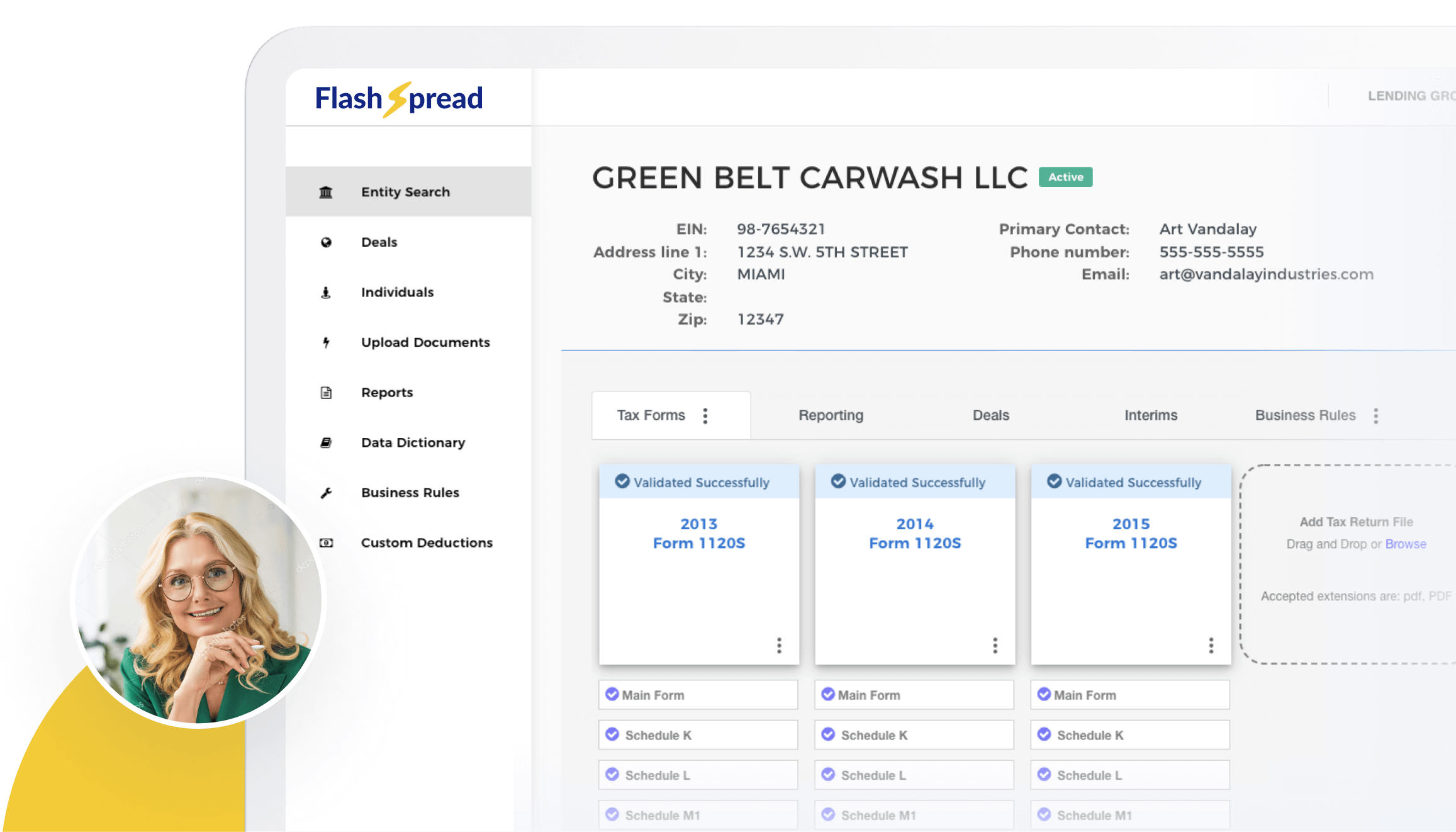In business, there are certain concepts that are good to know for various reasons. This is the case with EBITDA. While not a word per se, EBITDA contains a valuable formula that comes with a strong purpose.
Discover the business acronym EBITDA, why you should know it, how to calculate it and how automated spreadsheet software can simplify the process.
Table of Contents
EBITDA: A Business Acronym Worth Knowing
Rather than a word, EBITDA is an acronym, meaning each letter of the word represents a concept of the same letter.
EBITDA stands for earnings before interest, taxes, depreciation and amortization. It’s an alternate measure of profitability to net income.
Learning to calculate this formula and understand the result can reveal a crucial metric of your business.
What Does itRepresent?
The answer in one word is “profitability.”
Calculating EBITDA allows companies to compare profitability without accounting for depreciation or financing decisions.
Any commercial lender with access to their business finances can calculate EBITDA using the following formula:
EBITDA = Net Income + Interest + Taxes + Depreciation + Amortization
While not an all-encompassing metric, EBITDA is a measure of profitability that is widely-used enough that every business person should understand it.
How Often Should You Calculate EBITDA?
To keep vigilant track of the progress of your business, it’s recommended to calculate EBITDA at least once per year.
For strategic purposes; however, many experts say that averaging it out every three-to-five years is the optimal time frame. The reason for this is that time frame can account for anomalies and arrive at a realistic result.
What’s the Importance of Calculating EBITDA in Business?
In addition to measuring profitability, EBITDA is also used as a simplified business valuation. With numerous factors involved in business including debt, capital, profit, depreciation and more, it can be complicated to find an accurate valuation.
EBITDA is a relatively simple way to estimate the value of a business.
Subscribe to BeSmartee 's Digital Mortgage Blog to receive:
- Mortgage Industry Insights
- Security & Compliance Updates
- Q&A's Featuring Mortgage & Technology Experts
Are There Any Drawbacks to EBITDA?
While EBITDA is an undeniably useful tool for anyone who owns a business, it’s not perfect. For the most accurate information about a business, it’s crucial to combine your EBITDA results with other useful business metrics.
Key Controversies and Limitations of Using EBITDA
Doesn’t Factor in High-Interest Financial Expenditures
For example, if a business pays high interest on an office they lease or for a fleet of delivery trucks, that high interest won’t be reflected in the EBITDA result. This can make certain businesses appear to have greater value than they actually do.
Ignores the Cost of Debt
Since the EBITDA measurement factors in taxes and interest, it ultimately ignores the cost of debt. It’s easy to see how this could lead to inconsistencies when evaluating a business.
EBITDA Can’t Be Used to Secure a Loan
Although EBITDA has many uses, it’s not accurate enough to qualify a business for a loan. Loan qualification is based on the current money a business is actually generating, so it’s important not to assume that your EBITDA score means you qualify.
What Other Metrics Should You Use Along with EBITDA?
EBITDA is a widely-used formula that reveals useful information about any business, but it’s still just one metric. To attain a much more accurate understanding of your business, its best to combine EBITDA with another useful measurement, such as:
Return on Investment (ROI)
Arguably the most common formula conducted in business, return on investment shows what return you’re expecting to get back per money spent. This measurement is useful for determining the investor’s gains per dollar spent.
Net Present Value
Net present value takes into account the time value of money to give an accurate glimpse of a company’s cash flow.
Payback Period
The payback period is the time required for returns to cover costs. It’s beneficial to measure the payback period of each investment so you can compare the value of various investments.
Using Automated Spreadsheet Software to Simplify EBITDA
Remembering EBITDA and other valuable business formulas to track your progress is no longer a necessity. Many types of automated financial statement spreading software are available, and they can execute these formulas in an instant.
Automated spreadsheet software provides many noteworthy benefits, from saving time on all of your spreadsheet processes to quickly generating elaborate reports. It also helps you solve complex business equations with just a few keystrokes, making it a useful tool for evaluating your company as well.
Lenders Can Save Valuable Time With FlashSpread
Whether you need to instantly complete tax forms, cut time on your spreadsheet tasks, or calculate the EBITDA of your business, FlashSpread is the automated software that can help you get it done.
With FlashSpread, you can upload tax returns and watch as they’re converted into financial reports within seconds. If you’d like to see how our automated tax return spreading software can save time for your business, contact us for a free demo.




